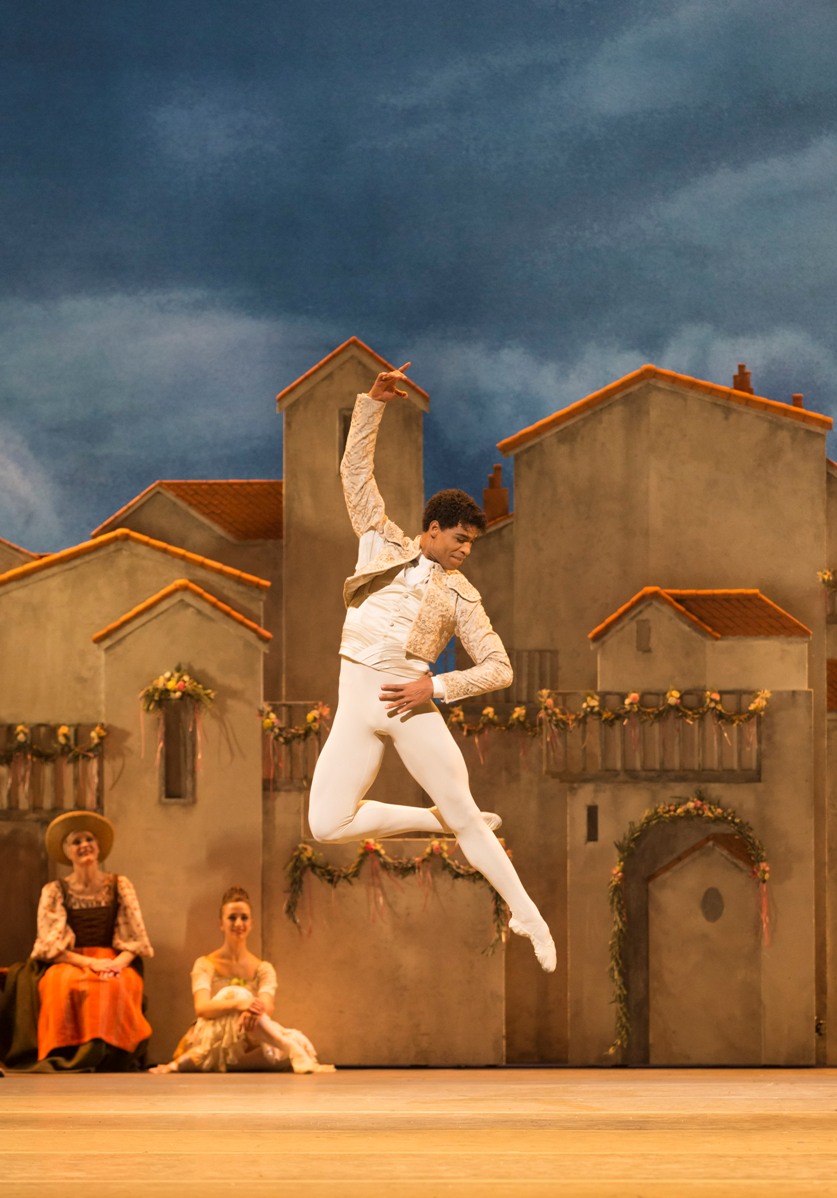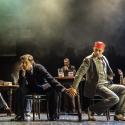The 1871 ballet that goes by the name of Don Quixote has always been a challenge to stage. Barely a tenth of its two hours-plus concerns the titular knight and his crackpot wanderings. The rest is fixed like a town hall security camera on the non-events of a square in Barcelona, where a flighty barmaid and a feckless barber fall in and out of love every few seconds while the townspeople stand about and watch.
Typically, Russian productions are happy to overlook this narrative snag to focus all on the choreographic fireworks; others tie themselves in knots trying to fashion some semblance of a dramatic arc. In this respect no revision has been more successful, of the many I have seen, than Carlos Acosta’s, now on its second run at the Royal Opera House after last year’s première, and subtly but significantly improved.
The ballet’s prologue, burdened with introducing the addled nobleman, his dreams of courtly love, his madcap plan to set out on his own moral crusade and the hiring of Sancho Panza as his squire, sets just the right tone of high ideals brought down by low comedy. I laughed out loud at the slapstick last year, and I laughed at the same jokes again, not least when the Don (a touching performance by Christopher Saunders), having seized on a bedpost for use as a lance, brings it down in triumph on the foot of his squire (a fat-suited Philip Mosley) – a gag to be reprised several times before the end of the show, to well-judged cumulative effect.
Genuine friendship gives their in-character flirtations a priceless veracity
Marianela Nuñez and Carlos Acosta, as the leads, have been round the block together more times than anyone can remember, which gives them an ease on stage as Kitri and Basilio that goes far beyond the dance mechanics of synchrony and support. Genuine friendship gives their in-character flirtations a priceless veracity, and the freedom, no doubt, to play around with one or two details on the night. This palpably adds spontaneity. In her first entrance, Nuñez seems not to leap out of the wings but explode, as if from a cannon. And however tricky the steps – some of them so fast as to be fiendish – they appear secondary to her inhabiting of the role of a fun-loving girl. She turns even a round of ronds-de-jambe en l’air into a saucy tease, daring Basilio to touch her ankle at each rotation.
Acosta too, though less of a jumper these days, is still fabulously quick and neat, darting about the crowd as Nuñez tries to confiscate his guitar, then tossing it neatly backwards over his head – a trick he repeats with variations. His pirouettes remain a class act, his barrel turns exemplary. In what must surely be the final lap of his dancing life, what he lacks in brute power he compensates in finesse, and charm by the sackload. (Acosta, pictured below right).
 Of course it’s a lot of nonsense. It’s a ballet about nothing but dance. And yet the verve with which this nonsense is delivered, and the corresponding fizz and colour of the musical score and Tim Hatley’s designs, are validation enough. Ludwig Minkus’s music is – as even Martin Yates the conductor must agree – gloriously second-rate. Second-rate because it’s circus music, rum-te-tum, plebeian; glorious because it doesn’t pretend to be anything more, bowling the action along with the sunniest good grace. Yates’ own orchestrations satisfyingly restore little-heard sections of Minkus’s original, and daringly replaces an entire scene (traditionally a puppet show, here very sensibly ditched) with onstage flamenco guitars. The temporary change of gear feels right.
Of course it’s a lot of nonsense. It’s a ballet about nothing but dance. And yet the verve with which this nonsense is delivered, and the corresponding fizz and colour of the musical score and Tim Hatley’s designs, are validation enough. Ludwig Minkus’s music is – as even Martin Yates the conductor must agree – gloriously second-rate. Second-rate because it’s circus music, rum-te-tum, plebeian; glorious because it doesn’t pretend to be anything more, bowling the action along with the sunniest good grace. Yates’ own orchestrations satisfyingly restore little-heard sections of Minkus’s original, and daringly replaces an entire scene (traditionally a puppet show, here very sensibly ditched) with onstage flamenco guitars. The temporary change of gear feels right.
Hatley’s ambitions for the set have been scaled down since the production’s last outing. The pretty houses on the town square are no longer quite so distractingly hyperactive: now one of them might slide to centre-stage to show someone emerging from its front door, but on the whole the walls and balconies stay put. Hugh Vanstone’s lighting is brilliantly sunny, as you’d expect, with some nice variation in the crepuscular gypsy camp, and a shadowy vaulted tavern for the finale. Acosta’s idea of using multiple platforms for dancing works nicely too: haycarts, tabletops and zinc bars all ring the changes.
With such a large and multitasking cast – townspeople, matadors, gypsies, dryads as well as several minor characters – the score-sheet will rarely show straight tens for accuracy and ensemble. Some of the cameos are stand-outs (Bennett Gartside's foppish Gamache, Ryoichi Hirano's preening lead matador, Yuhui Choe's cool Queen of the Dryads) but, hand on heart, the Royal’s corps de ballet aren’t a match for the Bolshoi’s, or the Mariinsky's. They’re just too English, for all the hand-clapping and olés. But they do visibly enjoy themselves, to the extent that you look forward to the big set pieces as much as to the pas de deux. That’s a credit to Acosta as director. They clearly love him and want to give him their best. And when he does finally decide to hang up his pumps, his next career is ready and waiting.















Add comment